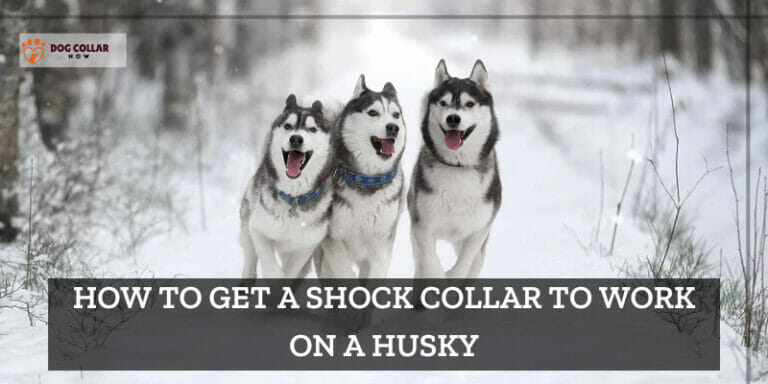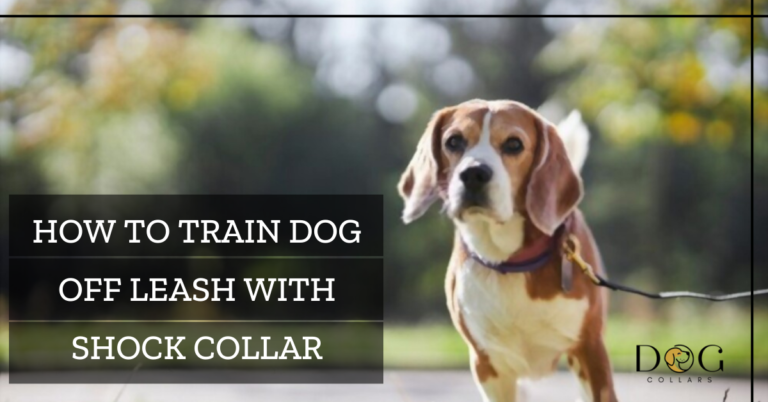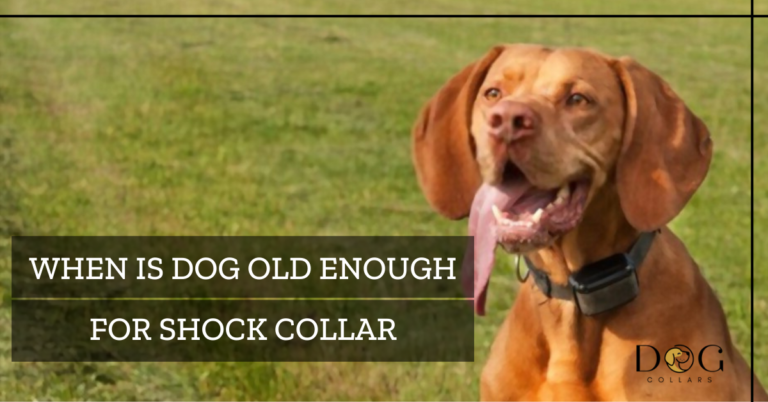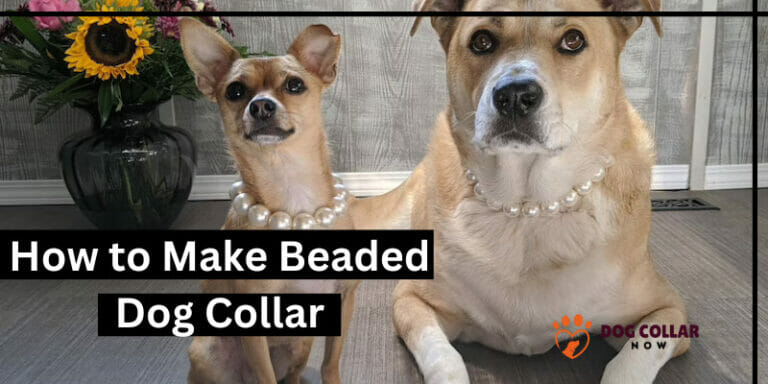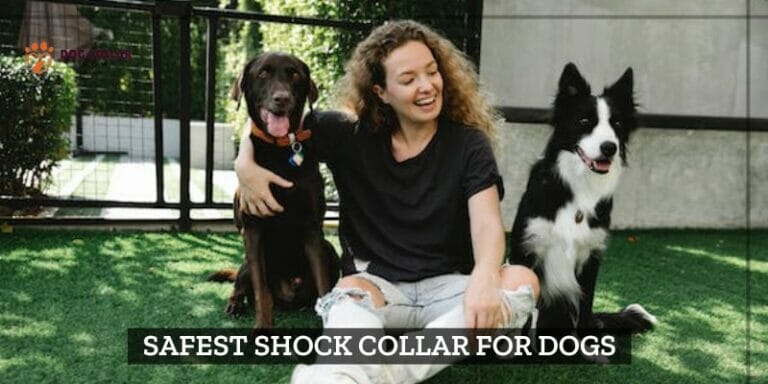How To Treat Collar Sores On Dogs – 7 Effective Ways

Dogs are our beloved furry companions who show us unconditional love. But they may experience painful and uncomfortable open wounds around their neck due to their collars. Collar wounds are not only irritating for dogs but also worrisome for their owners.
To treat wounds in dogs, remove the choker or prong, apply topical creams or ointments, and switch to a soft and comfortable choker or harness. If necessary, your vet may prescribe medication to clear up any infections and reduce pain and swelling.
Collar wounds are a common issue among dogs who wear chokers frequently, but don’t worry, there are many ways to treat and prevent them.
I will share safe and easy ways to treat, prevent, and recognize the causes and symptoms of sores in dogs. Say goodbye to wounds and hello to happy pups!
How to treat collar sores on dogs – Steps
1. Remove The Collar:
The initial step in treating a wound is to take off the choker, so the injured area can get air and begin the recovery process. It may be necessary to adjust or change the type of neckband used to avoid further discomfort.
2. Clean the Area:
Gently clean the wound with warm water and a bar of mild, pet-friendly soap. This helps remove dirt, debris, and bacteria. Be gentle while cleaning as any extra rubbing could make things worse for the dog’s body.
3. Apply Topical Creams:
Once cleaned, apply a topical balm prescribed by your veterinarian to the affected area. The cream should have antibiotic and anti-inflammatory properties. This helps soothe the wound and reduce inflammation and pain.
4. Switch To A Soft Collar Or Harness:
Replace with a soft choker or harness that won’t rub or irritate the wound. You can also try using a T-shirt or bandage to cover the area.
5. Prevent Licking:
Dogs may try to lick their wound, which can delay healing and introduce bacteria. Use a cone or other barrier to keep your dog from preventing licking the area of the body.
6. Monitor the Wound:
Keep an eye on the wound and monitor its progress. If it doesn’t heal or seems to be getting worse, consult your vet.
7. Follow Vet’s Recommendations:
If the wound is infected or severe, your vet may prescribe medication or recommend additional treatments. Follow their recommendations to ensure a full recovery.
By following these steps, you can effectively treat wounds on your dog and help them feel more comfortable and happy.
More Methods for treating collar wounds at Home
Honey:
Honey is a natural antibacterial agent that can help heal shock collar wounds in dogs. Apply a small amount of raw, organic honey directly to the affected area and cover it with a clean bandage. Leave it on for several hours before removing the bandage and washing the area with warm water.
Tea Tree Oil:
Tea tree oil can help reduce inflammation and promote healing. Dilute a few drops of tea tree oil with carrier oil, such as coconut oil or olive oil, and apply it to the affected area. Repeat this process twice a day until the wounds heal.
Aloe Vera Gel:
Aloe vera gel has natural anti-inflammatory properties that can help soothe and prevent pressure sores in dogs. Simply apply a small amount of pure aloe vera gel directly to the affected area and gently rub it in. Repeat this process twice a day until the wound heals.
Garlic:
Garlic has natural properties that can help fight and prevent infection and promote healing. Crush a few garlic cloves and mix them with carrier oil, such as coconut oil or olive oil. Apply the mixture to the affected area and let it sit for 5-10 minutes before washing it off with warm water.
Petroleum Jelly:
Petroleum jelly can help keep the affected area moist and prevent further discomfort. Apply a small amount of petroleum jelly directly to the affected area and gently rub it in. Repeat this process twice a day until the wound heals.
Baking Soda:
Baking soda has natural anti-inflammatory properties that can help reduce swelling and irritation. Mix baking soda with enough water to create a paste, and apply it to the affected area. Let it sit for 10-15 minutes before washing it off with warm water.
Almond Oil:
Almond oil is rich in vitamin E, which can help reduce inflammation and promote healing. Apply a small amount of almond oil directly to the affected area and gently rub it in. Repeat this process twice a day until the wound heals.
Remember to always consult with your pet veterinarian before using any home remedies on your dog, especially if the wound is severe
Symptoms Of Collar Sores In Dogs
If your dog has sores, you may notice one or more of the following symptoms:
- Redness and swelling around the neck area or contact points.
- Hair loss and scabbing
- Itching and scratching
- Pain and discomfort when touched or when wearing the choker.
How Do You Stop a Collar From Wounding the Dog?
The best way to prevent sores in dogs is to take preventive measures. Here are some things you can do:
- Proper fitting and change of collars: Make sure that your pet’s collar is not too tight or too loose, and adjust it as needed.
- Look for collars made of cotton or neoprene, which are super comfy.
- Regularly checking for signs of discomfort: Check your pet’s neck regularly for signs of redness, swelling, or hair loss.
- Switching to a harness if necessary: If your dog is prone to collar sores, you may need to switch to a harness that does not put pressure on the neck.
How Do You Treat E-collar Wounds For Your Dog?
E-collars, also known as Elizabethan collars, are commonly used to prevent dogs from licking or chewing at surgical areas, and wounds. Yet, prolonged use can lead to painful wounds and abrasions on the neck and ears of your furry friend.
- To treat shock collar wounds, the first step is to remove the neckband and give your dog a break from it. Clean the affected area with warm water and mild soap, and pat it dry with a clean towel.
- If the wound is infected, consult your vet, who may prescribe antibiotics or other topical treatments. To promote healing, you can apply a soothing balm, such as calendula cream or aloe vera gel, to the affected area.
- Additionally, ensure that your dog has a comfortable and well-fitted e-collar.
With proper care and attention, e-collar wounds can heal quickly, and your dog can be back to his happy and healthy self in no time.
Can A Shock Collar Cause Burns And Sores?
Yes, a shock collar can cause sores on a neck if used improperly or for extended periods. These training collars are designed to deliver a static shock to the pet’s neck for dog training.
But, the shock can cause skin discomfort and burns, and cause ulcers, especially if the choker is too tight or left on for too long. In addition to physical harm, shock collars can also cause emotional distress and anxiety in dogs, leading to behavioral issues.
It is important to note that we do not recommend shock collars as a training tool, and there are many humane and effective alternatives available, such as positive reinforcement training methods. If you suspect that your dog has developed wounds or other injuries from a shock collar, seek veterinary care immediately
How Is Pressure Necrosis Diagnosed?
Pressure necrosis is a condition that occurs when constant pressure or rubbing on a particular area of the skin causes damage to the tissues. We commonly see this condition in dogs who wear tight or poorly fitting collars or harnesses. The diagnosis of pressure necrosis is usually made through a physical examination of the affected area. The vet may observe signs of skin discomfort, inflammation, and discoloration, as well as the presence of open wounds.
How To Prevent Collar Chafing?
Collar chafing is a common problem in dogs, especially those who wear neckbands on a daily basis. To prevent collar chafing, it is important to choose a choker that fits your dog properly. The choker should be snug enough to prevent slipping, but loose enough to allow for comfortable movement and breathing.
You should also inspect your pet’s choker regularly for signs of wear and tear, and replace it as needed. Additionally, consider using a collar made from a soft material, such as leather or nylon, to cut friction and discomfort.
Conclusion
Taking good care of your pet is essential for their well-being. A variety of factors can cause collar wounds on dogs, including poorly fitted collars, prolonged use, and excessive rubbing or scratching. It is important to check your pup’s collar regularly for signs of irritation or soreness and to adjust or remove the collar as needed.
If your dog develops a collar wound, it is important to keep the area clean and dry and to apply a soothing ointment or cream to promote healing. Above all else, visit a vet if any concerns arise – they could help you choose the most effective method of treating your pet’s specific condition.
It’s important to focus on your pet’s health and comfort, and to avoid harsh training tools like shock collars, which can cause collar wounds and other injuries.
FAQs
Can Collars Irritate A Dog’s Neck?
Yes, collars can irritate a pup’s neck if they are too tight or made of abrasive materials. Prolonged use of a poorly fitting collar can cause wounds and even skin infections. It’s important to choose a collar that fits properly and is made of a soft, non-irritating material to minimize the risk of irritation.
Can a shock collar burn a dog’s skin?
Yes, a shock collar can burn a pet’s skin if used improperly or for prolonged periods. The electric shock delivered by the collar can cause skin discomfort and even burn the skin, especially if the collar is too tight or left on for too long.
Can hot spots on dogs go away on their own?
Some hot spots may heal on their own, but most need treatment to properly resolve. Without treatment, it can become infected, leading to more serious health problems.
How do you treat a dog hot spot?
To treat a dog hot spot, the affected area should be shaved and cleaned, and a topical antibiotic or antiseptic ointment should be applied. In some cases, oral antibiotics or steroids may also be prescribed by a veterinarian.

